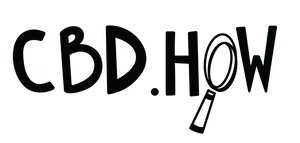Hemp, marijuana, or cannabis?
The cannabis plant is one of the most misunderstood, and terminology around it is commonly misused. Is it marijuana or hemp? Is hemp considered cannabis? Does all cannabis get you high?
Let’s clear out the confusion.
Marijuana is cannabis.
Hemp is cannabis.
Hemp is not marijuana. Marijuana is not hemp.
Cannabis
Cannabis sativa is a genus of flowering plants in the Cannabaceae family. Three primary species make up the Cannabacea family: Cannabis sativa, Cannabis indica, and Cannabis ruderalis.
Cannabis sativa and cannabis indica each have distinct qualities we know well. The plant’s specific concentrations of cannabinoids and terpenes determine if a “strain” of cannabis is an indica, sativa, or hybrid.
The term cannabis includes flower with these characteristics:
- Psychoactive effects
- Higher levels of THC
- Produces CBD, other cannabinoids, and terpenes
Marijuana and hemp are broad, non-scientific terms created for the cannabis plant. Both are the same species: cannabis. Both produce cannabinoids, terpenes, and other compounds.
Marijuana
The most popular slang for cannabis, “marijuana” (originally spelled “marihuana”) was created by propaganda campaigns during the Prohibition in the 1900s. The federal government and big businesses engineered these campaigns to demonize users, use in political and press propaganda, and advocate for the plant’s illegality. Cannabis opponents, like the first commissioner of the Federal Bureau of Narcotics, used the term for negative association with illegal immigration.
The Marijuana Tax Act of 1937 banned cannabis’ growth and sale with high taxes and strict regulations. The act defined marijuana as ALL parts of the cannabis plant, including seeds, resin, and all derivatives.
In today’s culture, marijuana often refers specifically to flower with more than 0.3% THC levels. Grown for medical and recreational use, the term is interchangeable with cannabis and generally contains up to 30% THC levels. However, cannabis is definitely the more politically and scientifically correct term.
Marijuana varieties are usually grown in controlled environments, focused on producing female plants that yield budding flowers. Growers must closely watch the plant at each life cycle stage, maintaining strict conditions in temperature, lighting, and humidity. Typically an ideal growing environment is humid and warm, plants about 6 feet apart, and the growth cycle lasts between 60 and 90 days.
Visually, marijuana is often either broad-leafed, a tight bud, or a nugget with tiny hairs or crystals.
Hemp
Hemp is a term for cannabis applied by the government for mostly industrially-produced cannabis that is meant for non-psychoactive use. It is believed that hemp was the first crop cultivated by humans. It’s also known as one of the strongest natural fibers!
One of the fastest-growing plants, it grows in a wide range of climates with a cycle of 108-120 days. Grown to maximize its size and yield, hemp is typically grown outdoors and doesn’t need the level of control necessary for marijuana. Plants are grown more closely together than marijuana (up to 4 inches).
The term hemp includes flower with these characteristics:
- Minimal to no psychoactive effects
- THC level at or below 0.3%
- Higher levels of CBD, other cannabinoids, and terpenes
The list of the products hemp is used to make keeps growing! This includes rope, clothing, jewelry, bags, textiles, paint, building materials, insulation, varnishes, paper, foods, drinks, inks, fuel, solvents, diapers, shoes, packaging, body care, and so much more. A study also discovered that hemp can clean toxic soil, producing clean, high-CBD concentrated hemp flower.
Visually, hemp has skinnier leaves concentrated at the top, with few below.
An important fact is that hemp and marijuana can’t be grown together. If grown too close together, the hemp’s pollen can ruin the marijuana crop, diluting the marijuana’s psycho-activity.
The Hemp vs Marijuana Confusion
Classifying cannabis as either hemp or marijuana is like saying all vegetables are either sweet or salty, instead of breaking them down into categories like potatoes, asparagus, spinach, etc. This ignores the diverse specificity of each vegetable.
“The CBD molecule and its associated pharmacology are the same, whether it was extracted from hemp or from marijuana. CBD is CBD, regardless of where it was originally derived from”, says Jeremy Riggle, Ph.D., and Chief Scientist at Mary’s Nutritionals. But even though CBD is the same on a molecular level, its origin still matters when it comes to legality.
Under the Agricultural Act of 2018, hemp-derived CBD is legal if it contains 0.3% THC or less. Marijuana-derived CBD is illegal, classified as a controlled substance despite its THC levels.
It’s important to understand what these terms mean, and how they affect you when it comes to using CBD products.
The confusion between the two terms has been amplified by the incorrect use of cannabis terminology and political & big-business propaganda. Continuing to stay as educated as possible only helps clear the confusion.
REFERENCES:
https://www.ncbi.nlm.nih.gov/pmc/articles/PMC5531363/
https://www.ncbi.nlm.nih.gov/pmc/articles/PMC4550350/
https://www.liebertpub.com/doi/full/10.1089/can.2016.0017
